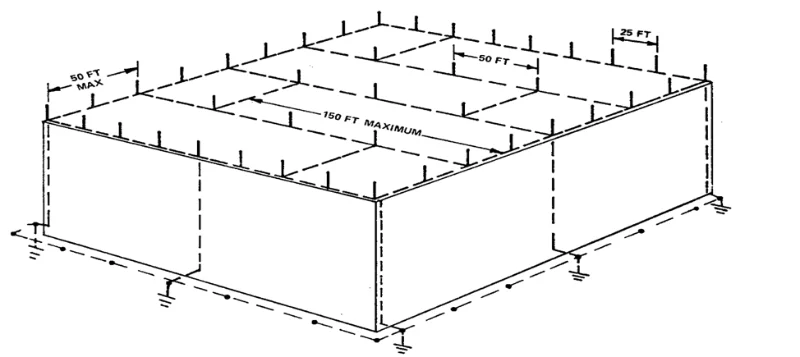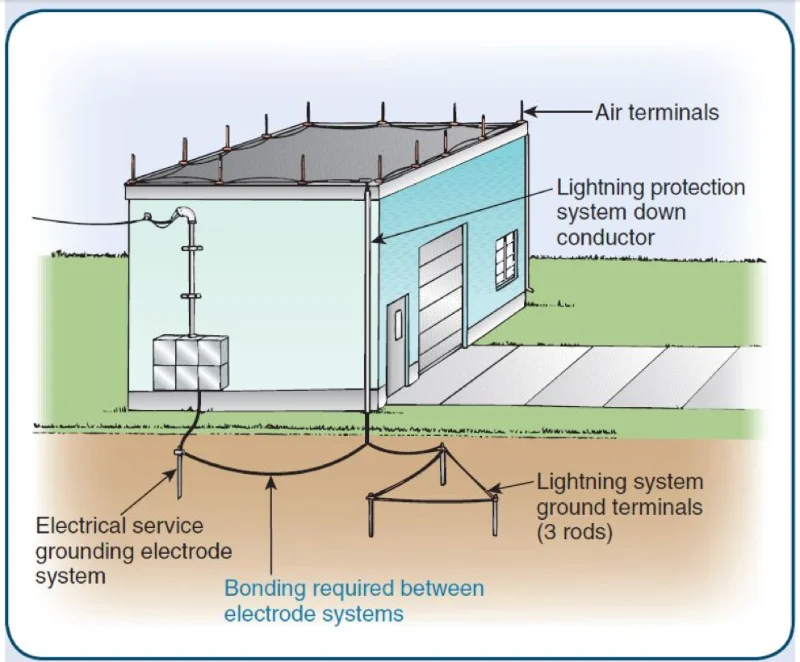Grounding: The Key To Lightning Protection
Properly made ground connections are essential to the effective functioning of a lightning protection system, as they serve to distribute lightning into earth ground. You can say that grounding is The Key To Lightning Protection. A grounding system typically includes a copper-bonded ground rod that is installed in the ground. When installing lightning protection, ground electrodes should be at least one-half inch in diameter by eight feet long. Copper-clad electrodes are recommended. In most cases a lightning protection system will have a minimum of two ground rods with an additional ground rod added for each 100 ft of a structure.
Static Grounding
Airports require special attention to grounding. They not only handle fuel in close proximity to masses of people, but the airport is usually on high ground and therefore subject to lightning strikes. Static grounding is required whenever an airplane is refueled. This is normally accomplished by positioning a properly installed static grounding receptacle in the tarmac near the location where the refueling takes place.
A static ground lead is attached to this receptacle from both the refueling vehicle and from the aircraft before the fuel hoses are attached to the aircraft. This equalizes any potential difference between the two vehicles preventing a static spark.
Static grounding receptacles are installed flush with the finished tarmac. The receptacle is welded to either a ground rod or ground grid or both. Receptacles that screw onto a threaded (sectional) rod are also available but the threaded connection may increase in resistance with time.
Static grounding receptacles have an internally cast ball (also available with a removable ball) for attaching the grounding clamp and are supplied with an attached cover. Static grounding receptacles can be welded directly to a ground rod. A ground conductor can be welded to the static grounding receptacle at the same time the receptacle is welded to a ground rod.
Lightning protection also should be installed on the airport structures.


